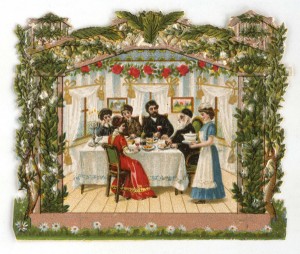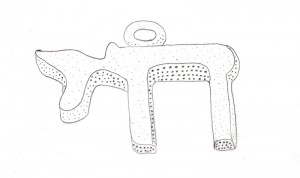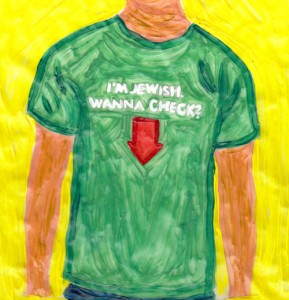On 18 October, our next special exhibition “A Time for Everything: Rituals Against Forgetting” will open to the public. The exhibition met with great success at its previous venue in Munich. We therefore invited Bernhard Purin, director of the Jewish Museum Munich, to write a piece for our blog. He introduces us to an exhibit that is of relevance to this week’s holiday.

A family in the sukkah, from our collections
The Feast of Booths (“Sukkot” in Hebrew, from the word “sukkah,” meaning “tabernacle”) will be celebrated this year from 19–25 September. Along with Passover (Pesah) and Pentecost (Shavuot), it numbers among the three pilgrimage festivals, and commemorates the forty years Israelites spent wandering in the desert after the exodus from Egypt. The Third Book of Moses (23: 42–43) ordains:
“Ye shall dwell in booths seven days; all that are home-born in Israel shall dwell in booths; that your generations may know that I made the children of Israel to dwell in booths, when I brought them out of the land of Egypt: I am HaShem your G-d.”
Booths have been built ever since and their roofs covered with foliage, in keeping with this commandment. Rural Jews in Germany often erected such booths in the attic of their homes, and this tradition has been taken up at the Jewish Museum Franken in Fürth as well as at its Schwabach branch. Yet mobile booths which could be set up in the garden before the festival, then taken apart and packed away for the rest of the year, were also common. One booth of this kind survived in the village of Baisingen near Rottenburg am Neckar, where a large Jewish community once lived. → continue reading

